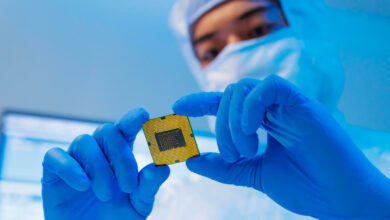Authorities probe a second fatal Ford EV crash that may have involved its partially automated driving system


The National Transportation Safety Board is investigating a March crash near Philadelphia that killed two people and involved a Ford electric vehicle that may have been operating on a partially automated driving system.
A Mustang Mach E sport utility vehicle hit two stationary passenger cars on Interstate 95 at 3:19 a.m. March 3, the agency said. Both drivers of the stationary cars were killed, and one may have been outside of their vehicle.
In a posting Wednesday on the social platform X, the agency said it will coordinate with the Pennsylvania State Police in the probe. The Mach E hit a parked Toyota Prius and rammed it into a Hyundai Elantra, the agency said.
Ford said in a statement that it was told of the Philadelphia crash by the NTSB, and the company informed the National Highway Traffic Safety Administration.
“We are researching the events of March 3 and collaborating fully with both agencies to understand the facts,” the company said Wednesday.
The crash is the second this year involving a Mach E that the NTSB has sent a team to investigate. The first crash occurred on Feb. 24 along Interstate 10 in San Antonio, Texas.
The National Highway Traffic Safety Administration also is investigating that crash, in which the Mach E struck a Honda CR-V that was stopped in the middle lane with no lights around 9:50 p.m. The driver of the CR-V was killed.
The NTSB said that preliminary information shows the Mach E in the Texas crash was equipped with Ford’s partially automated driving system
The agency at the time said it was investigating the crash due to continued interest in advanced driver assistance systems and how vehicle operators interact with the new technology.
Ford’s Blue Cruise system allows drivers to take their hands off the steering wheel while it handles steering, braking and acceleration on highways. The company says the system isn’t fully autonomous and it monitors drivers to make sure they pay attention to the road. It operates on 97% of controlled access highways in the U.S. and Canada, Ford says.
There are no fully autonomous vehicles for sale to the public in the U.S.
Both NHTSA and the NTSB have investigated multiple previous crashes involving partially automated driving systems, most involving Tesla’s Autopilot. In past investigations, the NTSB has examined how the partially automated system functioned.
Source link




